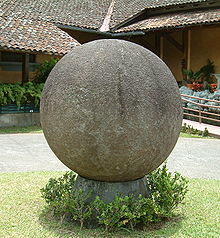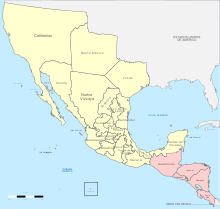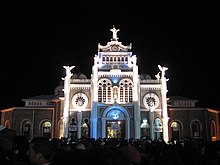Costa Ricans
| Languages | |
|---|---|
| Costa Rican Spanish, Limonese Creole, Bribri, Ngäbere | |
| Religion | |
| Catholicism, Protestantism, Buddhism and minorities of other religions. | |
| Related ethnic groups | |
| Spaniards, Italian Costa Rican, Chorotega, Other European peoples, Afro-Costa Rican, Other Amerindian peoples, Chinese people in Costa Rica, Nicaraguan Diaspora, Mulatto |

Costa Ricans (Spanish: Costarricenses), also called Ticos, are from a multiethnic[1][2] Spanish speaking nation in Central America called Costa Rica. Costa Ricans are predominantly whites, castizos (halfway between white and mestizo) and mestizos, but their country is considered a multiethnic society, which means that it is home to people of many different ethnic backgrounds. As a result, modern-day Costa Ricans do not consider their nationality as an ethnicity but as a citizenship with various ethnicities. Costa Rica has four small minority groups: Mulattoes, Blacks, Asians, and Amerindians. In addition to the "Indigenas", whites, mestizos, blacks and mulattoes, Costa Rica is also home to thousands of Asians. Most of the Chinese and Indians now living in the country arrived during the 19th century as migrant workers.[3]
According to the 2011 Census, Costa Rica has a population of 4,301,712 people. The population growth rate between 2005 and 2010 was estimated to be 1.5% annually, with a birth rate of 17.8 live births per 1,000 inhabitants and a mortality rate of 4.1 deaths per 1,000 inhabitants.
Costa Rica was the point where the Mesoamerican and South American native cultures met. The northwest of the country, the Nicoya peninsula, was the southernmost point of Nahuatl cultural influence when the Spanish conquerors (conquistadores) came in the 16th century. The central and southern portions of the country had Chibcha influences. The Atlantic coast, meanwhile, was populated with Jamaican immigrant workers during the 19th century. The country has received immigration from Europe, Africa, Asia, Americas, Middle East etc.
History


The colonial period began when Christopher Columbus reached the eastern coast of Costa Rica on his fourth voyage in 1502. Numerous subsequent Spanish expeditions followed, eventually leading to the first Spanish colony, Villa Bruselas in Costa Rica in 1524.[4]
During most of the colonial period, Costa Rica was the southernmost province of the Captaincy General of Guatemala, which was nominally part of the Viceroyalty of New Spain (i.e., Mexico), but which in practice operated as a largely autonomous entity within the Spanish Empire. Costa Rica's distance from the capital in Guatemala, its legal prohibition under Spanish law to trade with its southern neighbors in Panama, then part of the Viceroyalty of New Granada (i.e., Colombia), and the lack of resources such as gold and silver, made Costa Rica into a poor, isolated, and sparsely inhabited region within the Spanish Empire.[5] Costa Rica was described as "the poorest and most miserable Spanish colony in all America" by a Spanish governor in 1719.[6]
Another important factor behind Costa Rica's poverty was the lack of a significant indigenous population available for forced labor, which meant that most of the Costa Rican settlers had to work on their own land, preventing the establishment of large haciendas. For all these reasons Costa Rica was by and large unappreciated and overlooked by the Spanish Crown and left to develop on its own. The small landowners' relative poverty, the lack of a large indigenous labor force, the population's ethnic and linguistic homogeneity, and Costa Rica's isolation from the Spanish colonial centers in Mexico and the Andes all contributed to the development of an autonomous and individualistic agrarian society. Even the Governor had to farm his own crops and tend to his own garden due to the poverty that he lived in. An egalitarian tradition also arose. Costa Rica became a "rural democracy" with no oppressed mestizo or indigenous class. It was not long before Spanish settlers turned to the hills, where they found rich volcanic soil and a milder climate than that of the lowlands.[7]
Ethnic groups






As of 2012[update] most Costa Ricans are of primarily Spanish or Spanish/Mixed ancestry with minorities of German, Italian, French, Dutch, British, Swedish and Greek ancestry. Whites, castizos and mestizos together comprise 83% of the population.[8][9]
European migrants used Costa Rica to get across the isthmus of Central America as well to reach the USA West Coast (California) in the late 19th century and until the 1910s (before the Panama Canal opened). Other European ethnic groups known to live in Costa Rica include Russians, Danes, Belgians, Portuguese, Croats, Poles, Turks, Armenians and Georgians.
Many of the first Spanish colonists in Costa Rica may have been Jewish converts to Christianity who were expelled from Spain in 1492 and fled to colonial backwaters to avoid the Inquisition.[10] The first sizable group of self-identified Jews immigrated from Poland, beginning in 1929. From the 1930s to the early 1950s, journalistic and official anti-Semitic campaigns fueled harassment of Jews; however, by the 1950s and 1960s, the immigrants won greater acceptance. Most of the 3,500 Costa Rican Jews today are not highly observant, but they remain largely endogamous.[11]
Costa Rica has four small minority groups: Mulattos, Blacks, Amerindians and Asians. About 8% of the population is of Black African descent or Mulatto (mix of European and black) who are called Afro-Costa Ricans, English-speaking descendants of 19th century black Jamaican immigrant workers.
In 1873 the Atlantic Railroad imported 653 Chinese indentured laborers, hoping to duplicate the success of rail projects that used Chinese labor in Peru, Cuba, and the United States. Asians represent less than 0.5% of the Costa Rican population, mostly from China, Taiwan and Japan.
There are also over 104,000 Native American or indigenous inhabitants, representing 2.4% of the population. Most of them live in secluded reservations, distributed among eight ethnic groups: Quitirrisí (in the Central Valley), Matambú or Chorotega (Guanacaste), Maleku (northern Alajuela), Bribri (southern Atlantic), Cabécar (Cordillera de Talamanca), Guaymí (southern Costa Rica, along the Panamá border), Boruca (southern Costa Rica) and Térraba (southern Costa Rica).
A considerable portion of the Costa Rican population is made up of Nicaraguans.[12] There is also a number of Colombian refugees. Moreover, Costa Rica took in lots of refugees from a range of other Latin American countries fleeing civil wars and dictatorships during the 1970s and 80s – notably from El Salvador, Chile, Argentina, Cuba and recently from Venezuela.
Currently immigrants represent 9% of the Costa Rican population, the largest in Central America and the Caribbean. By 2014 the three largest Immigrant Diasporas in Costa Rica are people from: Nicaragua, Colombia and United States.
Population genetics

While the vast majority of Costa Ricans self identify as being of White (criollo/castizo) descent, genetic studies show that a considerable part of Costa Ricans are partially descended from the pre-Columbian Amerindian population, with a much smaller proportion also showing some African ancestry.
The population from the Central Valley (where almost 60% Costa-Ricans live) is one the Mestizo populations with the highest European ancestry in Latin America (like Medellin, Colombia and Rio Grande do Sul, Brazil) areas with relatively low pre-Columbian Native population density (occupied then by heterogeneous groups of chiefdoms or hunter-gatherers) and where the current Native population is sparse, during the Spanish colonization of the Americas, Costa Rica was one of the relatively more isolated populations in the Americas. According to genetic studies the average Costa Rican from the Central Valley is: 65% European, 30% Amerindian and 5% Black.[13]
By the late twentieth century, allusions in textbooks and political discourse to "whiteness," or to Spain as the "mother country" of all Costa Ricans, were diminishing, replaced with a recognition of the multiplicity of peoples that make up the nation.[14]
Population
Approximately 40% live in rural areas and 60% in urban areas. The rate of urbanization estimated for the period 2005–2010 is 2.3% per annum,[15] one of the highest among developing countries.
| Province | Province population | City | City population |
|---|---|---|---|
| San Jose Province | 1,345,750 | San Jose de Costa Rica | 350,535 |
| Alajuela Province | 716,286 | Alajuela | 46,554 |
| Cartago Province | 432,395 | Cartago | 156,600 |
| Puntarenas Province | 357,483 | Puntarenas | 102,504 |
| Heredia Province | 354,732 | Heredia | 42,600 |
| Limon Province | 339,395 | Puerto Limon | 105,000 |
| Guanacaste Province | 264,238 | Liberia | 98,751 |
Languages
The primary language spoken in Costa Rica is Costa Rican Spanish, one of the main particularities of the Costa Rica Spanish is the usage of the second person singular pronoun vos (called voseo) or usted instead of tu. Some native languages are still spoken in indigenous reservations. The most numerically important are the Bribri, Maléku, Cabécar and Ngäbere languages, some of which have several thousand speakers in Costa Rica – others a few hundred. Some languages, such as Teribe and Boruca, have fewer than a thousand speakers. A Creole-English language, Jamaican patois (also known as Mekatelyu), is spoken along the Caribbean coast. About 10.7% of Costa Rica's adult population (18 or older) also speaks English, 0.7% French, and 0.3% speaks Portuguese or German as a second language. Mennonite immigrants to the country also speak Plautdietsch.
Religion

Christianity is the predominant religion, and Roman Catholicism is the official state religion according to the 1949 Constitution, which at the same time guarantees freedom of religion.
According to the most recent nationwide survey of religion, conducted in 2007 by the University of Costa Rica, 70.5% of Costa Ricans are Roman Catholics, 44.9% of the population are practicing Catholics, 13.8% are evangelical Protestants, 11.3% report they do not have a religion, and 4.3% belonged to another.
Because of the recent small but continuous immigration from Asia and the Middle East, other religions have grown, the most popular being Buddhism (because of a growing Han Chinese community of 40,000), and smaller numbers of Hindu, Jewish, Bahá’í, and Muslim adherents.
The Sinagoga Shaarei Zion synagogue [16] is near La Sabana Metropolitan Park in San José. Several homes in the neighborhood east of the park display the Star of David and other Jewish symbols.[17]
The Church of Jesus Christ of Latter-day Saints (Mormons) claim more than 35,000 members, and has a temple in San Jose that served as a regional worship center for Costa Rica, Panama, Nicaragua, and Honduras.[18] However, they represent less than one percent of the population.[19][20]
Emigration and immigration
Costa Rica's emigration is among the smallest in the Caribbean Basin. By 2014 about 6% of the country's people live in another country as immigrants. The main destination countries are the United States, Spain, Argentina, France, Colombia, Panama, Ecuador, Peru, Chile, Brazil, Mexico and other Central American countries. In 2005, there were 127,061 Costa Ricans living in another country as immigrants. Remittances were $513,000,000 in 2006 and they represented 2.3% of the country's GDP.
Costa Rica's immigration is among the largest in the Caribbean Basin. Immigrants in Costa Rica represent about 10.2% of the Costa Rican population. The main countries of origin are Nicaragua, Colombia, United States and El Salvador. In 2005, there were 440,957 people in the country living as immigrants. Outward Remittances were $246,000,000 in 2006.
References
- ^ "Lawmakers vote to define Costa Rica as a multiethnic, plurinational country". The Tico Times. Retrieved 29 March 2015.
- ^ http://www.telesurtv.net/english/news/Costa-Rica-Declared-Pluricultural-and-Multiethnic-Country-20140828-0060.html
- ^ "Luxury Centralamerica Culture packages - Travelwizard". Retrieved 29 March 2015.
- ^ http://www.guiascostarica.com/history.htm
- ^ "A Brief History of Costa Rica: Colonial Times". Archived from the original on September 22, 2007. Retrieved 2007-12-21.
- ^ Shafer, D. Michael (1994). Winners and losers: how sectors shape the developmental prospects of states. Ithaca, N.Y.: Cornell University Press. ISBN 0-8014-8188-0.
- ^ "Costa Rica – Cartago". Costarica.com. 2009-05-22. Retrieved 2010-06-26.
- ^ Costa Rica. State.gov (2012-04-09). Retrieved on 2012-05-19.
- ^ Joshua Project. "Country - Costa Rica :: Joshua Project Joshua Project". Retrieved 29 March 2015.
{{cite web}}: line feed character in|title=at position 39 (help) - ^ "The Jewish Community in Costa Rica". Retrieved 29 March 2015.
- ^ "Culture of Costa Rica - history, people, women, beliefs, food, customs, family, social, marriage". Retrieved 29 March 2015.
- ^ www.state.gov Background Note: Costa Rica – People
- ^ Wang, Sijia; Ray, Nicolas; Rojas, Winston; Parra, Maria V.; Bedoya, Gabriel; Gallo, Carla; Poletti, Giovanni; Mazzotti, Guido; et al. (2008). "Geographic Patterns of Genome Admixture in Latin American Mestizos". PLoS Genetics. 4 (3): e1000037. doi:10.1371/journal.pgen.1000037. PMC 2265669. PMID 18369456.
{{cite journal}}: CS1 maint: unflagged free DOI (link) - ^ "Culture of Costa Rica - history, people, women, beliefs, food, customs, family, social, marriage". Retrieved 29 March 2015.
- ^ Central Intelligence Agency (2011). "Costa Rica". The World Factbook. Langley, Virginia: Central Intelligence Agency. Retrieved 2011-10-04.
- ^ Centro Israelita de Costa Rica, Comunidad Judía de Costa Rica, Costa Rican Jewish Community
- ^ "Jewish Community in Costa Rica". Jcpa.org. Retrieved 2010-06-26.
- ^ Costa Rica. LDS Newsroom. Retrieved 2008-12-13.
- ^ "San José Costa Rica LDS (Mormon) Temple". Ldschurchtemples.com. Retrieved 2010-06-26.
- ^ "List of LDS (Mormon) temples in Central America and the Caribbean". Lds.org. Retrieved 2010-06-26.
